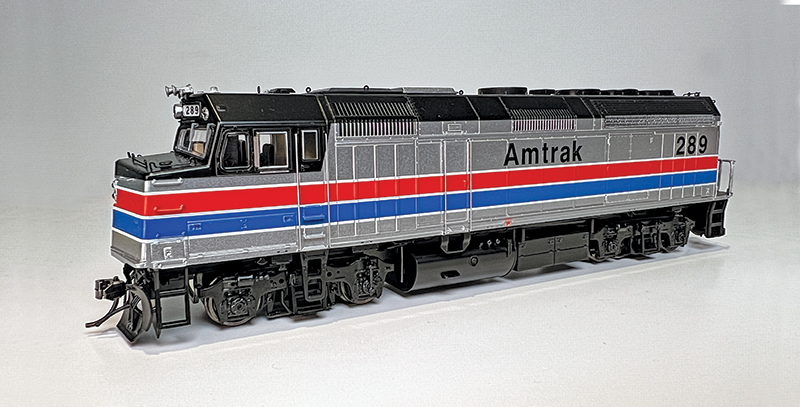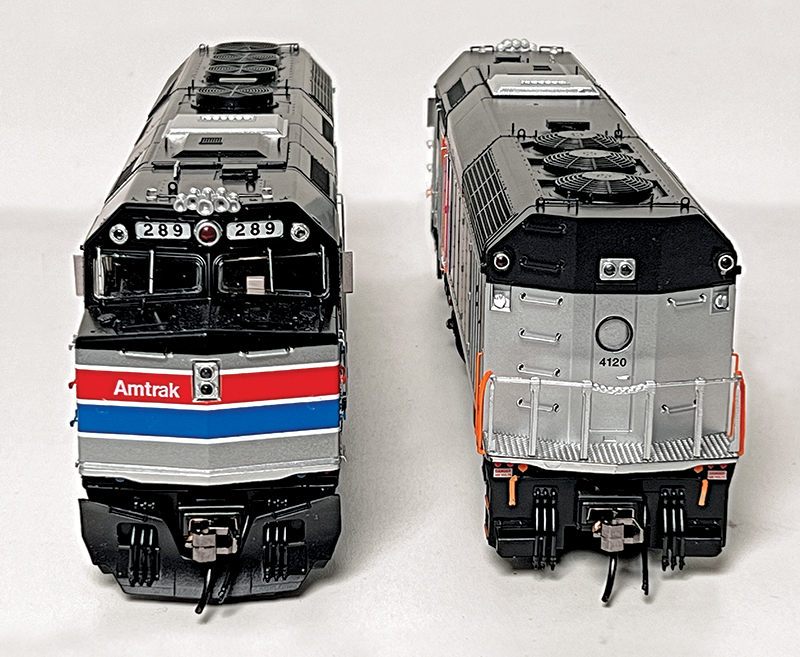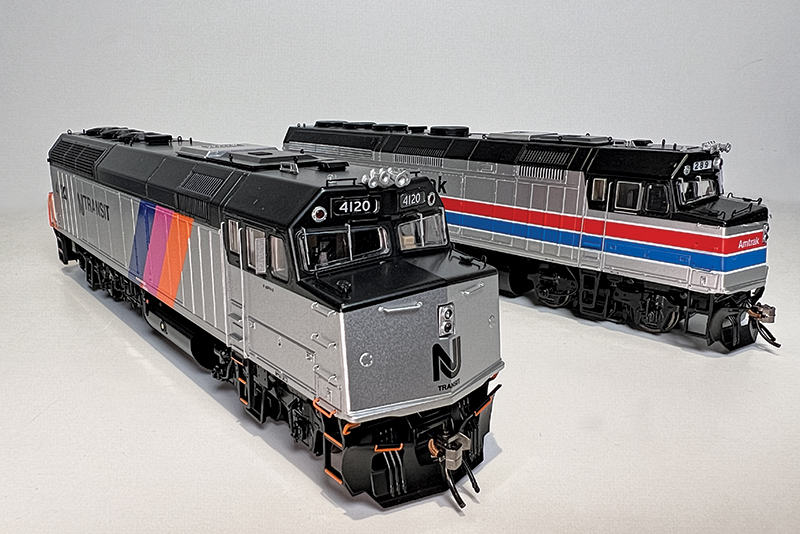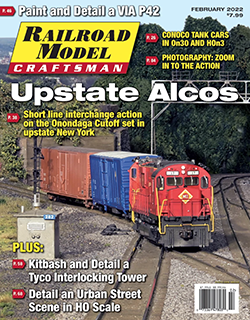 Review by Harry K. Wong/photos by the author
Review by Harry K. Wong/photos by the author
Amtrak was formed on May 1, 1971, as a quasi-government entity to take over the operation of passenger rail service from the majority of privately run Class I railroads in the United States. For railfans and passengers alike, the first few years of Amtrak were characterized by a motley fleet of used and often worn-out equipment inherited from those predecessors. Within two years, Amtrak took delivery of their first all-new purpose-built diesel-electric locomotives designed for long-distance operations — the six-axle, 3,000hp SDP40F from Electro-Motive Division (EMD) of General Motors. After 150 SDP40Fs were delivered between 1973 and 1974, the locomotive gained an unfortunate reputation for derailments. Fairly or not, the SDP40F became the “fall guy” for the derailment issues and was subject to speed restrictions nationwide.
In 1976, Amtrak took delivery of another all-new passenger locomotive, this time one intended for propelling their new Budd Amfleet passenger cars for short- and medium-distance corridors in the Northeast and in Southern California. Aside from a full-width “cowl” car body and a similar 16-cylinder 3,000hp prime mover, the F40PH was quite different from the SDP40F, having two fewer axles and replacing the traditional steam generator with separate head-end power (HEP) generator to send electricity for lights, heat, and air conditioning. Initially, the acquisition of F40PHs was unrelated to issues pertaining to the SDP40Fs, but as the six-axle unit’s reputation worsened, Amtrak quickly traded in the majority for more F40PHs. Many of these F40s were built with major components from donor SDP40Fs, and deemed “F40PHRs” on paper, yet are identical externally to other F40s built during the same time frame. Commuter lines also purchased F40PHs in large numbers as well, including Chicago RTA (now Metra), Boston MBTA, NJ Transit, and many more.

Amtrak 200 is seen wearing the railroad’s Phase II paint scheme. These “Later Phase” F40PHs also were the first to use the newly developed Nathan K5LA horn cluster, which necessitated a wider notch above the cab to accommodate its broader profile.
This latest release from Rapido Trains represents their third production of HO scale F40PH locomotives. Earlier runs featured Phase I F40PHs, Canadian VIA F40PH-2Ds, and F40 “Cabbage” car conversions. This latest production focuses on the “Later Phase” F40PHs produced by EMD. Our first sample for this review is No. 289, an F40PH finished in Amtrak’s Phase II paint scheme, one of a group of twenty F40PHRs delivered in 1978. Amtrak 289 is an example of Phase IIb F40PH production.
Compared to Phase I F40PHs, Phase II and Phase III units feature a larger 1,800-gallon fuel tank that is “front-mounted” directly behind the front truck followed by the air reservoirs and battery boxes directly ahead of the rear truck, versus a smaller fuel tank riding just ahead of the rear truck on Phase I units. These “Later Phase” F40PHs also were the first to use the newly developed Nathan K5LA horn cluster, which necessitated a wider notch above the cab to accommodate its broader profile. Phase IIb and Phase III F40PHs differ from Phase IIa and Phase I units by having four vertical posts on their rearmost side panels versus three on the earlier units. Phase III units delivered to commuter agencies and to VIA Rail were designated as F40PH-2s by their manufacturer, but beyond the customer-specified options, they are outwardly identical to other Phase III F40PHs.

This image shows the front of the Amtrak version and the rear of the NJ Transit version. Locomotive 4120 was built in 1981 for NJT.
Our second model is No. 4120, representing a 1981-built Phase III F40PH-2 delivered to commuter operator NJ Transit. Beginning in 1980, new EPA regulations mandated lower specific noise and particulate emissions for diesel locomotives. Phase III F40PHs are distinguished by EMD’s quieter “Q-fans” countersunk into a recessed panel atop the radiator section. Per the prototype, this NJT F40PH also features a blanked-out dynamic brake section.
Each Rapido F40PH features a long list of details, beginning with a complete, fully painted cab interior with seats, engineer’s control stand and speedometer. On the outside are separately applied windshield wipers, etched metal cab mirrors, and atop the cab, a Nathan K5 air horn, Sinclair radio antenna, rooftop air vent, and a slightly oversized red strobe light perched between the number boards. The side handrails are formed from durable .015 metal wire. Each pilot bristles with m.u. hoses, the train line air hose, coupler cut levers, HEP receptacles and a large pilot snowplow up front…
Rapido Trains, 500 Alden Road, Unit 21, Markham, Ontario L3R 5H5, Canada, rapidotrains.com




